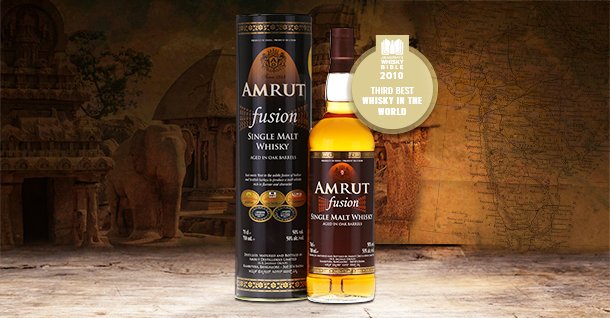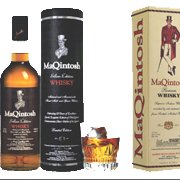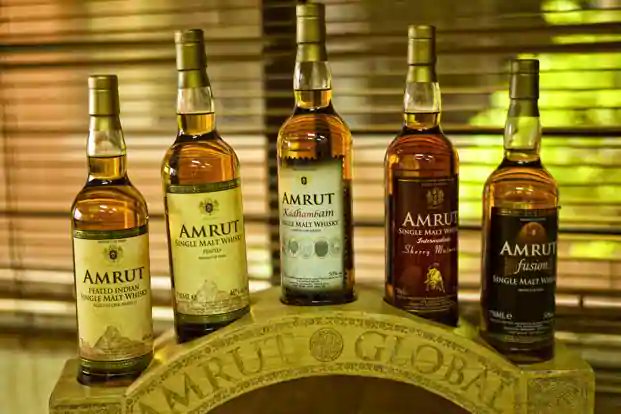Amrut Single Malt - The Indian brand which is a pioneer in the Single malt whisky segment and has successfully created its mark in the global premium whisky segment.
A thread about the brand and its history (1/n)
A thread about the brand and its history (1/n)
It was in May 2019, a small Indian whisky manufacturer, dwarfed next to contending global liquor giants like Pernod Ricard and Diageo, were eagerly awaiting the jury’s decision at the Bartender’s Whisky Awards in San Francisco (2)
To the world’s surprise, the Indian brand wins a gold medal that fetes it as the ‘World Whisky Producer of the Year’ establishing its dominance in the global market.
It all started in 1948 when Late JNR Jagdale started Amrut Distilleries on Mysore road 20 kms off Bangalore (3)
It all started in 1948 when Late JNR Jagdale started Amrut Distilleries on Mysore road 20 kms off Bangalore (3)
In the initial days, the distillery had low key operations making rum and brandy only for domestic consumption, with major supply to defense canteens. It was in 1980s, Amrut started producing malt whisky at its distillery venturing into the whisky segment (4)
was known for its IMFL brand Maqintosh and Silvercup brandy. Fast forward to 2001, JNRs son Neelakanta Rao and his grandson Rakshit along with Vikram Nikam, the team behind Amrut, gave Indian craftsmanship a whole new identity, like global Japanese and American whisky brands (5)
The problem faced was that Indian whiskies did not get the recognition on the global platform, with Europeans particularly calling it Indian made foreign liquor and never considered it as whisky. The reason for the same was the way whisky was manufactured, (6)
Scotch whisky is made from malted grain and it matures in casks over time (five years), and in India, the whisky is made from molasses and matures faster and is ready for consumption immediately after distillation, thus having an inferior taste and texture (7)
Hence, Indian whisky never got recognition globally. But Rao and team decided to change the existing ways with an aim to put an Indian whisky brand on the global map (8)
It started with studying the UK market extensively & learning the various techniques of manufacturing,and it was in 2002 when Amrut started blind tasting of their samples in English pubs without disclosing the country of origin,& to their surprise the response from the public (9)
… was encouraging and showed signs of huge acceptance. The Amrut single malt brand went ahead with the official launch in 2004 at a restaurant in Glasgow. After receiving the validation though, the going was slow between 2004 and 2006 (10)
Though sales in the UK were good, the numbers were not making up for the investment. The demand was about 1600 cases cumulatively over a period of five years. The group had invested Rs 3 crore on this project and it was not taking off as expected (11)
Amrut’s first big break came when in 2009 Malt Maniacs, a famous, but independent, group of whisky connoisseurs awarded Amrut Fusion the Best Natural Cask whisky in Daily Drams (under 50 pounds) Category (12)
The next year, whisky guru Jim Murray in his 2010 edition of Whisky Bible declared Amrut Fusion the third best in the world, giving it 97 out of 100 points. This was after tasting over 4,000 whiskies from across the world (13)
This led to the rise in demand from 1600 to 5000 cases, giving it a much needed push. Today, the brand clocks over 70,000 cases of its single malt annually with major demand in the global market, with exports to over 45 countries (14)
Overall, the group manufactures 5 million cases of all its brands per year and wants to get to 20 million cases in the next decade (15)
Amrut fusion is the most famous product globally with global demand so high that it has scarcity in India, and the company had to launch a variety of malted whisky expressions for the Indian market under the brand of Amrut Amalgam to meet the demand (16)
The whisky is made from select Indian malted barley grown in Punjab and Rajasthan, the north-west frontier States of India. Malting takes places at maltsters in Jaipur and Delhi (17)
The malted barley is then transported to the south of India to our production unit in Bangalore where it is carefully mashed and distilled in small batches to preserve the natural aromas (18)
The whisky then undergoes maturation in imported oak barrels for over three years in a unique tropical condition at the warehouses on the Distillery premises in Bangalore, thus producing Single malt with superior quality and taste. (19)
Today the company has over 10+ variants in the single malt category with the major ones being: Amrut Indian Single Malt Whisky 46 percent, Amrut Peated Indian Single Malt Whisky 46 percent, Amrut Fusion Indian Single Malt Whisky 50%, Amrut Cask Strength and Amrut Peated(20)
In addition to this, the company has products across Blended whisky, Rum, Brandy and Gin categories for the Indian market and is poised for a good growth in the coming years (21)
Today, the company clocks over 330 Crores of annual revenue with ~30 Cr revenues from export of Amrut & #39;s whiskies alone Amrut Distilleries stands as proud testimony to the fact that it has taken significant steps across generation to build such a remarkable business! (22/22)

 Read on Twitter
Read on Twitter




